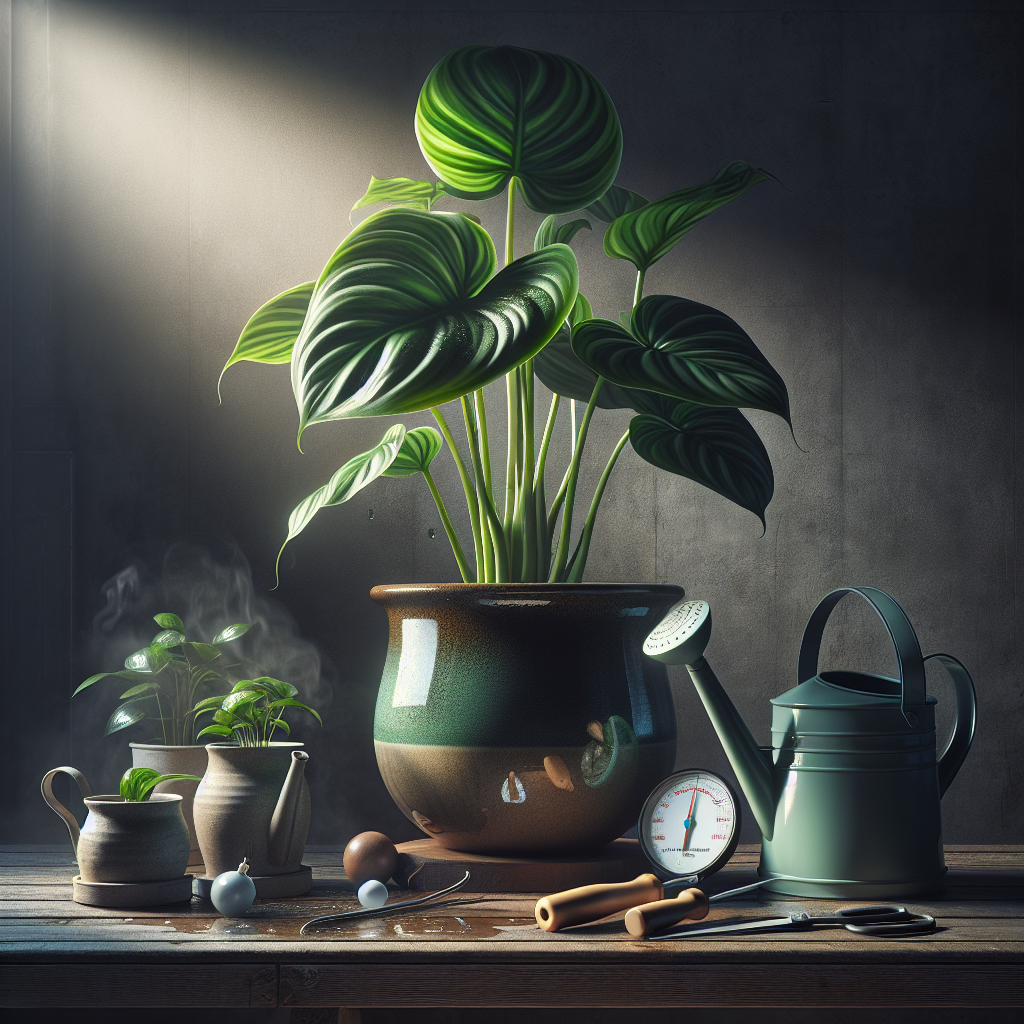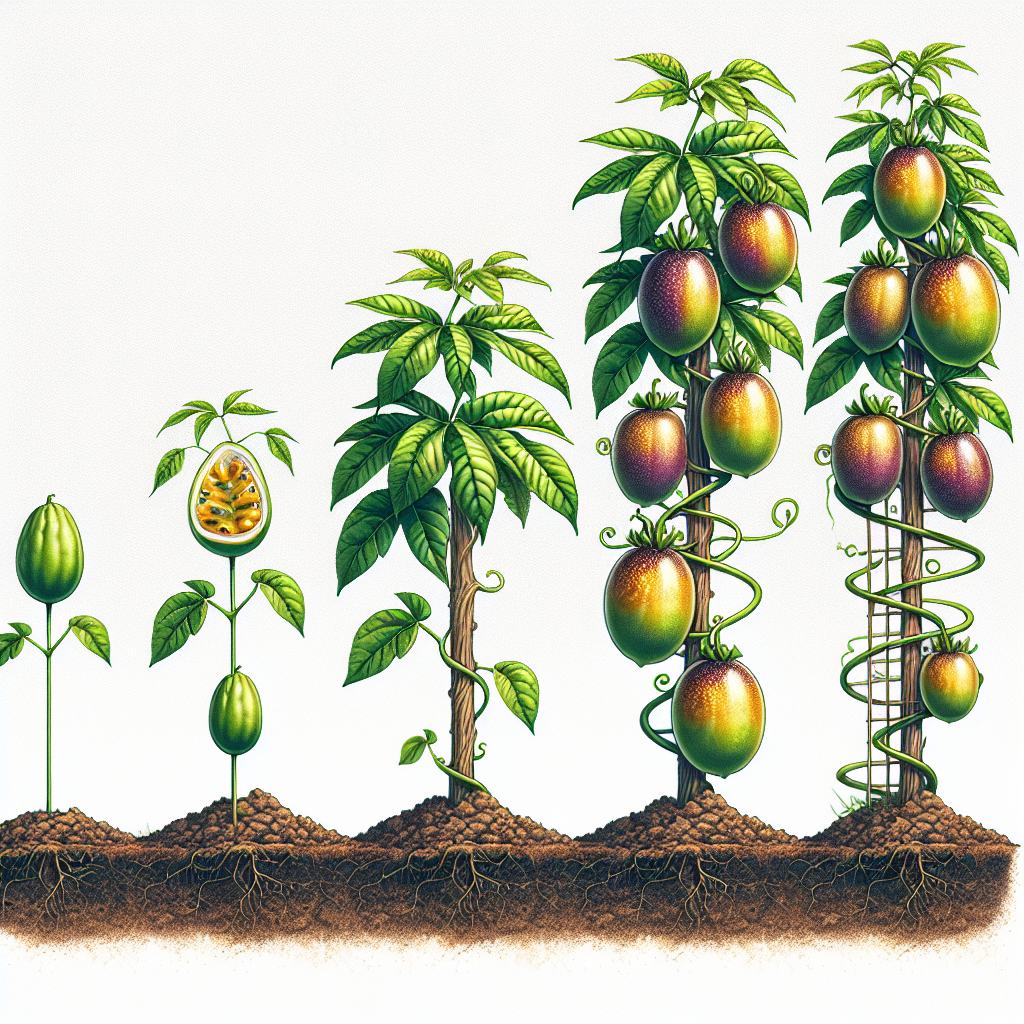Philodendron Watering Guide: Finding the Perfect Schedule
Updated July 12, 2024 at 12:18 pm

The Essentials of Philodendron Care
- Pet Friendly
Philodendrons, while beautiful, contain calcium oxalate crystals which can be toxic to pets if ingested. Keep these plants out of reach of curious cats and dogs to ensure a safe and happy home for your fur family.
- Light Requirements
Philodendrons thrive in indirect light. Harsh, direct sunlight can burn the leaves, so aim for a spot where the light is filtered or diffused for the best growth results.
- Watering
These plants prefer to dry out slightly between waterings. Ensure your philodendron’s soil is moist but never soggy, as overwatering can lead to root rot.
- Humidity
Philodendrons are native to tropical environments, so they appreciate a boost in humidity. Consider placing them near a humidifier or using a pebble tray to increase moisture in the air.
- Temperature
These tropical plants enjoy warmer temperatures, ideally between 65-78°F (18-25°C). Avoid drafts, sudden temperature changes, or exposure to extreme cold which can damage the plant.
- Difficulty
Generally, philodendrons are not fussy and are fairly easy to care for, making them a wonderful option for both beginner and experienced plant enthusiasts.
Understanding Your Philodendron’s Watering Needs
When you think about taking care of your philodendron, getting the watering right can be a bit like Goldilocks finding the perfect bowl of porridge — not too much, not too little, but just right. Your philodendron might be quietly telling you it’s thirsty or that you’re loving it a little too much with your watering can. If you notice a yellowing of the leaves, it might be time to assess your watering habits. But fear not, perfecting the watering schedule for your philodendron is easier than you might think, and I’m here to guide you through it.
First, figure out the type of philodendron you own as some varieties may prefer slightly different watering frequencies. Generally, a good rule of thumb is to allow the top inch of soil to dry out before watering again. But this is where a handy soil moisture meter can be your best friend. Inserting this gadget into the soil gives you a straightforward reading that takes the guesswork out of when to water. Based on many glowing reviews, the XLUX Soil Moisture Meter is a reliable option that, without a doubt, has helped many plant parents avoid the pitfalls of over or under-watering. It’s durable, easy to use, and doesn’t require any batteries. Plus, you can use it for other plants in your collection — truly a win-win.
Pros
- No battery required
- Easy to read
- Can be used for other indoor plants
Cons
- Some users have reported it can break if forced into very hard soil
Find This and More on Amazon
Creating the Optimal Watering Environment
Even with knowing when to water, creating the right environment for your philodendron can make all the difference. When it comes to the pot and the soil, it’s like creating the perfect bed for a good night’s sleep — it needs to be just right. Choosing a pot with adequate drainage is essential. One that catches your eye and reviews rave about is the La Jolíe Muse White Ceramic Flower Pot. Not only does it come with a sleek design that complements the verdant philodendron leaves, but the draining hole at the bottom prevents water from pooling at the base — something your philodendron would thank you for if it could.
Pros
- Elegant design
- Drainage hole to prevent overwatering
- Durable ceramic material
Cons
- White color may show dirt over time
- May require a saucer to protect surfaces from water drainage
Find This and More on Amazon
How Often Should I Water My Philodendron?
Determining how often to water your philodendron can be influenced by several factors — seasonality, air flow, pot size, and indoor temperature, to name a few. If your home is rather dry, especially during those winter months when heating systems are blasting, you might find your philodendron’s soil dries out faster. Alternatively, in the humid summer months, your watering intervals might stretch out longer as the soil retains moisture well.
As you adapt your watering schedule to your plant’s unique conditions, you may find tools like watering globes can offer a helpful hand. The Aqua Globe Mini, for example, with its glass design and self-regulating feature, ensures your philodendron gets watered even when you’re not around. Many have found these to be quite the lifesavers during busy periods or short trips away. They are not only functional but also quite decorative.
Pros
- Self-watering feature
- Decorative and functional
- Good for travel or forgetful plant owners
Cons
- May not be suitable for all plant sizes
- Glass is fragile and can break if not handled carefully
What Signs Indicate I’m Overwatering or Underwatering?
As with many things in life, balance is key, and your philodendron will let you know if it’s getting too much or too little water. Overwatering can lead to a tragic case of root rot, where the roots drown and decay due to lack of oxygen. You’ll see signs like yellowing leaves, a soggy base, or a general look of unhappiness in your plant. On the flip side, underwatering will have your philodendron’s leaves looking sad, droopy, and dry.
But don’t fret, with a little observation and adjustment, you can easily get back on track. The key here is to know what healthy philodendron soil feels like — slightly damp like a wrung-out sponge. And remember, less is often more. When in doubt, it’s usually better to err on the side of underwatering and observe how your plant responds.
How to Adjust Watering in Different Seasons
Just like we swap out our wardrobes to accommodate the changing seasons, your philodendron’s watering needs will change with the weather. During the warmer, brighter months of spring and summer, your philodendron will be in its growth phase, requiring more frequent watering. However, when fall and winter roll around, growth slows down, and so should your watering frequency. This natural seasonal cycle is your cue to modify your routine accordingly.
And hey, if you’re looking for a soil that will help you through the season changes, consider the FoxFarm Ocean Forest Potting Soil. It’s well-aerated, has a good mix of nutrients, and it’s well-draining — all the things a philodendron craves. It’s been a popular choice among plant enthusiasts for a reason.
Pros
- Nutrient-rich mix
- Good drainage
- Works well for a variety of plants
Cons
- Can be a bit pricier than other soils
- Some users might find the mix too strong for young plants or seedlings
Find This and More on Amazon
Choosing the Right Soil Mix for Your Philodendron
Soil is to plants what a foundation is to a house – it’s crucial for support and health. Philodendrons do best in a mix that is both well-draining and fertile. You don’t want the water to sit around the roots, that’s a no-go for sure. Instead, you’re looking for something that lets excess water drain away while still holding onto the right amount of moisture.
You might have come across the Miracle-Gro Indoor Potting Mix during your search for the ideal soil. From what people have been saying, this mix strikes a good balance between drainage and water retention. It’s formulated without bark or compost, which can be less than ideal for indoor plants because they can attract gnats.
Pros
- Specifically designed for indoor plants
- Less prone to gnats due to no bark or compost
- Contains coconut coir, which helps to hold and release water as needed
Cons
- May need to be supplemented with perlite for extra drainage for some philodendron varieties
- Not organic, which might be preferred by some plant enthusiasts
When to Consider Repotting Your Philodendron
As your philodendron grows, it might eventually need a bit more elbow room. Generally, every two to three years is a good frequency to consider repotting. But, your plant will give you some signals when it’s time – like roots peeking out of the drainage holes, or maybe it just seems a bit too top-heavy for its current pot.
A great choice for repotting is to find a pot that’s just one size larger than the current one. This way, your philodendron isn’t overwhelmed by too much space, which can lead to excess soil moisture and root problems. If you need a pot upgrade, the Classic Home and Garden Honeysuckle Planter is getting some solid attention. Its durable resin construction makes it a lightweight, yet sturdy choice for your beloved philodendron.
Pros
- Lightweight and easy to move
- Pot size variety suitable for up-sizing
- Resin material resists cracking
Cons
- Not as heavy as ceramic or terracotta might be windswept outdoors
- May require more frequent watering due to its lighter material
Philodendron Fertilization: A Nutrient Boost for Better Growth
Your philodendron is not a high-maintenance friend and doesn’t require frequent fertilization. But giving it a little nutrient boost during its growing season (spring and summer) can really help it flourish. Think of fertilizer as vitamins for your plant — something to pep it up and encourage lush, vibrant growth.
For those who’ve been raving about the results, the Osmocote Smart-Release Plant Food has been a highlight. It’s a controlled-release fertilizer, which means it gradually supplies nutrients to the soil over several months. Because of its well-regarded performance, many plant lovers have adopted it into their care routine.
Pros
- Easy to use
- Provides nutrition up to 6 months
- Can be used for a variety of indoor and outdoor plants
Cons
- Some may prefer organic options
- Pellets can sometimes get moldy if overused or if soil drainage is poor
Preventing and Treating Common Philodendron Pests and Diseases
No matter how well you care for your philodendron, pests and diseases might still pay an unwanted visit. The best defense is a good offense — keeping your plant healthy will help it fend off any potential invaders. However, if you do encounter pests like spider mites or mealybugs, or diseases like leaf spot, treating them early is key.
One well-recommended product for handling these issues is the Neem Oil. It’s a natural pesticide that’s safe to use indoors and has been effective against a range of common plant pests. Plus, it doubles as a fungicide, tackling those pesky fungal diseases that can sometimes arise.
Pros
- Natural and non-toxic
- Effective against many types of pests and some fungal diseases
- Can also be used as a leaf polish on unaffected plants
Cons
- Strong odor that some may find unpleasant
- Requires regular application for best results
Dealing with Environmental Stress on Philodendrons
Sometimes it’s not just about water, soil, or pests — environmental stress can take a toll on your philodendron too. This could be due to poor lighting, drafty spots, or the wrong temperature. It’s about finding the sweet spot where your philodendron feels right at home.
If you suspect light might be an issue, perhaps in those darker rooms or corners, using an LED Grow Light can make a world of difference. Something like the GE Lighting LED Grow Light is perfect for giving your plant that extra boost to mimic natural sunlight and, according to those who have tried it, has helped keep their plants thriving even in less than ideal lighting conditions.
Pros
- Energy-efficient LED technology
- Full spectrum light for all stages of plant growth
- Can easily be used with standard light fixtures
Cons
- May not be necessary if you have ample natural light
- The initial cost may be higher compared to traditional bulbs
Treating Leaf Problems and Soil Issues for Philodendrons
If you’ve noticed that your philodendron is displaying some browning tips or perhaps yellowing leaves, don’t panic just yet – it might just be trying to tell you something about its environment. Browning usually indicates a lack of humidity or over-fertilization, while yellow leaves could signify overwatering or poor drainage in the soil.
Treating these problems can be simple; for humidity concerns, consider a device like the TAOTRONICS Cool Mist Humidifier. Not only does it increase the moisture in the air, but it also features multiple settings to help you provide just the right comfort zone for your precious philodendron. People who’ve used it often say that it’s a game-changer for maintaining the health of their indoor plants.
Pros
- Runs quietly, perfect for any room
- Adjustable mist levels
- Large water tank allows for extended use without constant refills
Cons
- Regular cleaning required to avoid mold and mildew buildup
- Larger size might not be suitable for tight spaces
Maximizing Growth: The Best Practices for Philodendron Enthusiasts
To get the most out of your philodendron, it’s important to understand that these plants thrive on attention to detail. Aside from ensuring you’ve got the watering schedule dialed in, don’t overlook the importance of the right placement, timely pruning, and the occasional dusting of leaves to maximize photosynthesis.
This might also mean using tools like the Fiskars Micro-Tip Pruning Snip for precise trimming of any dead or yellowing leaves. Plant lovers have said that these snips are incredibly precise and comfortable to use, promoting healthy plant growth by allowing you to remove only the necessary parts without damaging the whole plant.
Pros
- Precision cutting for delicate plants
- Spring-action design reduces hand fatigue
- High-quality steel blades stay sharp through multiple uses
Cons
- Blades may stick if not cleaned regularly
- May be more expensive than other pruning scissors on the market
Philodendron Varieties to Explore for Your Collection
With such a diverse family, philodendrons come in many shapes, sizes, and colors. Whether you’re drawn to the heart-shaped leaves of the Philodendron hederaceum or the striking variegation of the Philodendron ‘Brasil’, there’s bound to be a variety that speaks to your heart. And let’s not forget the bold and architectural Philodendron selloum, which adds a dramatic touch to any indoor space.
When selecting your next philodendron, keep in mind the particular care requirements of the species. Some may demand higher humidity or more frequent watering, but each brings its own unique vibe and aesthetic to your home.
Final Tips for Thriving Philodendrons
As we wrap up this thorough guide on philodendron care, remember that the simplest details often make the biggest difference. Watering is a delicate balance, and each plant will have its own needs. Keep a consistent check on soil moisture, avoid letting your philodendron sit in water, and make adjustments for seasons and growth phases. With the right tools, pots, and environment, you’re setting your philodendron up for success.
Remember, the joy of plant care is not just in watching your philodendron grow, but also in learning and adapting alongside it. Your philodendron’s luscious leaves and easy-going nature make it a rewarding companion for any indoor gardener. With the knowledge you’ve gained today, you’re well-equipped to nurture your green friend and perhaps, even inspire others to add a philodendron or two to their plant collection. Happy planting!
Shop more on Amazon

